The next generation of genetically altered food is forging ahead, aiming to be attractive to consumers rather than producers. Katrina Megget finds out whether Crispr means crisper salads
-
Consumer-focused genetic engineering: The new wave of genetically engineered foods aims to appeal directly to consumers by enhancing taste, nutrition and aesthetics. Examples include purple tomatoes with boosted vitamin levels and strawberries with extended shelf life.
-
Gene editing vs. genetic modification: Gene editing, using techniques like Crispr, is distinct from traditional genetic modification. It involves precise changes to existing genes without adding foreign DNA, making it faster and potentially more acceptable to consumers.
-
Innovative products: Companies like Bayer and Pairwise are developing gene-edited foods such as non-pungent mustard greens and seedless blackberries. These products promise improved flavour, nutrition and consumer appeal, potentially shifting public perception of genetically engineered food.
-
Regulatory and public acceptance: While gene-edited foods face fewer regulatory hurdles and are seen as safer and more natural compared to GMOs, there are still concerns about oversight and long-term effects. However, changing regulations and positive consumer feedback suggest growing acceptance.
This summary was generated by AI and checked by a human editor
What if we could boost our vitamin levels by eating a purple tomato? Or rely on strawberries to make the final at Wimbledon before turning to mush? Maybe eat greens that actually taste delicious? Well, these products are in the pipeline and others like them are already on supermarket shelves. The result of genetic engineering, these more ‘aesthetically pleasing’ fruits and vegetables herald a shift in how food producers are approaching genetically engineered food – and it has potential to change the narrative.
Traditional genetic engineering for food has had a tricky ride since its early days at the turn of the century. And it hasn’t helped that most consumers aren’t that interested in genetic engineering that focuses on traits that improve crop yield, like resistance to drought or pesticide – areas food producers traditionally have focused on. But things are changing with the realisation that consumers tend to be drawn to products that are tailored to benefit them, whether it’s nutrition or taste – or even a pineapple that’s pink instead of yellow. For producers, that’s opening a door to a new generation of genetically engineered food.
‘Bayer is deeply attuned to what consumers are seeking: foods that are not only rich in nutrients but also delightful in taste,’ Ruth Mathieson, global head of strategic marketing at Bayer Vegetable Seeds, said last year when the agricultural giant announced genome-editing initiatives to enhance vegetables. ‘Our commitment is to deliver on these expectations.’
All fruits and vegetables used to have more seeds and taste worse
And deliver Bayer is, with the expected release early this year of a salad leaf that has been genetically stripped of its pungent taste. The Crispr-edited mustard green was originally produced by agtech startup Pairwise, which entered into an exclusive product licensing agreement with Bayer last year to further develop and commercialise the vegetable at scale. The companies claim the edited salad green has an improved flavour and higher nutrition compared to lettuce. They believe this will make the vegetable more appealing to consumers.
‘Improving the sensory experience of fruits and vegetables is critical to getting people to eat more of them, thus improving nutrition, diet and health,’ says Tom Adams, co-founder and chief executive of Pairwise. ‘All fruits and vegetables used to have more seeds, taste worse and didn’t look appealing. Changing these qualities has gotten people to eat more of them, which is a very good thing. One of the great benefits of using genome editing is we can do more than one thing at a time: we can create farmer, environmental and aesthetic benefits in a single great product.’
Genetic cut and paste
Pairwise took the salad green and upgraded it using the newer genomic technique of gene editing via the molecular scissors known as Crispr, which can selectively make cuts to a target gene to alter it. This allowed gene-specific mutations to create knockouts of all functional copies of the type-1 myrosinase enzyme genes in the mustard greens. The myrosinase enzymes hydrolyse the plant compounds known as glucosinolates, contributing to the unpleasant ‘mustard bomb’ flavour that is triggered when chewing the mustard greens. According to Pairwise’s study results published in 2022, greenhouse and field trials demonstrated, via sensory and biochemical analyses, a stable reduction in pungency in edited plants.
Adams describes the editing as ‘disarming the reaction’ that creates the strong flavour. ‘The biochemistry of the reaction is well known, so it was a matter of looking at the genome and understanding which genes produced the chemicals that react with each other and cause the intense spiciness when you chew on a leaf,’ he says.

This gene editing is a nifty bit of science, which Adams believes will enable opportunities for the rapid development of nutritious foods, improve human nutrition and also enhance consumer appeal. But Bayer and Pairwise point out the genetically altered salad greens aren’t considered a genetically modified organism under the traditional understanding of a GMO – and this could make a big difference in how appealing these next-generation foods could be.
Genetic modification involves the creation of a new variety of plant (or animal) by adding foreign genes from a different plant species or animal. The result is a plant that could not be produced through traditional crossbreeding. The first genetically modified food with foreign genes that appeared on the market was the Flavr Savr tomato in the 1990s, which ripened more slowly. However, many people didn’t like the idea of what was labelled ‘Frankenfoods’ by the media and regulations on such foods have been tight, particularly in Europe.
In contrast, gene editing is a much newer technique, which does not involve the addition of foreign DNA. Instead, it uses technology such as Crispr to target and turn on or off specific genes in the plant or animal, resulting in the creation of a new variety. It’s seen as more targeted and precise, explains Cathie Martin, professor of plant sciences at the UK research institute John Innes Centre in Norwich, who is interested in making food more nutritious and has been involved with the development of a gene-edited tomato that contains vitamin D3. ‘Gene editing is a technology that can make targeted changes to the DNA of organisms that could be generated by natural mutagenic processes,’ she says.
The benefit is these genetic changes can be achieved more quickly using gene-editing than traditional crossbreeding, which takes time finding the desirable traits through trial and error. That’s why Adams is in favour of the tech. He says the new altered salad green would have typically taken years to create through traditional crossbreeding. But by using Crispr gene editing, it took the firm about six months. ‘Plant breeders continuously create new varieties but it takes a long time and a lot of effort,’ he says. ‘New breeding techniques, like gene editing, lower the barriers to create new varieties because you can make very precise changes very quickly without sacrificing all the other great traits a variety already has.’
Delicious and nutritious
According to Martin, the introduction of the less regulated gene-editing tech has allowed smaller companies to enter the fold – whereas genetic modification had been dominated by four multinational companies. It has also allowed these smaller firms to be more innovative, developing crops that are more flavoursome, more nutritious or more aesthetically pleasing. ‘Coincidentally, this is allowing a new focus on consumer traits,’ she says.
As a result, research is booming. You can already buy tomatoes in Japan that have been altered to be rich in the neurotransmitter gamma-aminobutyric acid (GABA) and which are believed to lower blood pressure and promote relaxation. Non-browning mushrooms, apples and potatoes are being explored, as is the development of gluten-free wheat and strawberries with a longer shelf life. Pairwise is also looking at developing pitless cherries and seedless blackberries. ‘We’re really excited about the work we’re doing in blackberries,’ Adams says. ‘We’ve improved their architecture, removed the thorns and created a seedless eating experience in a great tasting variety that we think consumers will love.’
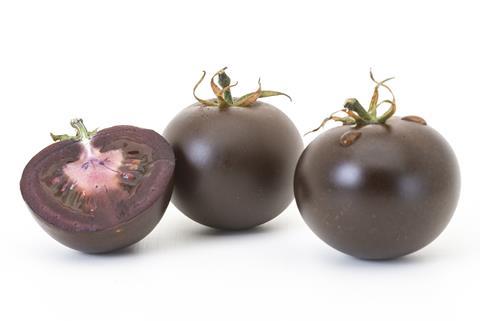
Martin’s interest is in making food more nutritious, which is why she is exploring a gene-edited tomato that accumulated vitamin D3. She says an estimated 63% of people in the UK are getting insufficient levels of vitamin D, with deficiency associated with increased risk of depression, dementia, Alzheimer’s and Parkinson’s disease. ‘Scientists have been looking for a plant source of vitamin D3 and the specialised metabolism of tomato allows a simple gene edit that causes the accumulation of provitamin D3. This can be converted to vitamin D3 by growing the plants outside or exposing them to UV light.’
Using Crispr gene editing, Martin’s team made deletions in a gene encoding the enzyme SI7-DR2 (a specific isoform of 7-dehydrocholesterol reductase) that converts 7-dehydrocholesterol (provitamin D3) to cholesterol in tomato. Knocking out the gene resulted in the increase in provitamin D3. According to the team’s results, the levels of vitamin D3 that could be achieved in one SI7-DR2-mutant tomato approach 30% and 20% of the recommended daily allowance in green and red tomatoes respectively.
Martin says the team is currently starting human bioavailability studies to make sure the vitamin D3 made in the tomato is available through consumption. The hope is the commercialisation process can be initiated this year.
Concerned citizens
But given the controversial legacy of genetic modification from the 1990s and the resulting stringent regulations, do consumers want food that’s been tinkered with, even if it tastes nicer or is bursting with nutrients? ‘My own experience is that consumers like to try new products if they are attractive, taste good, have novelty, offer additional health benefits and are available through consumer-oriented organisations that canvass and respond to their customers’ feedback,’ Martin says.
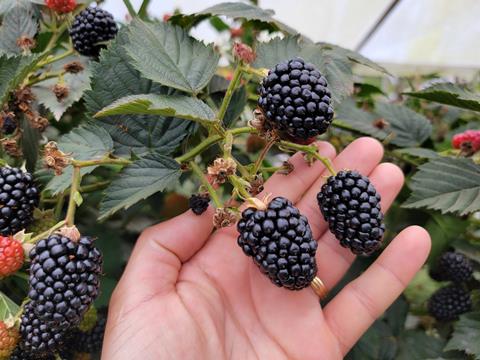
GMOs have a reputation, but gene editing offers food producers a glimmer of hope to shift the narrative and make genetically engineered food, in general, more appealing. That’s because gene-edited food is, in effect, no different to food resulting from traditional breeding, Adams explains. ‘We’re making the same kinds of changes that occur using traditional plant breeding only we’re more precise, so from a safety perspective there’s no difference,’ Adams says. ‘We still examine the plants to ensure they are what we intended and anything that doesn’t make the grade gets discarded.’
But not everyone is happy with the new tech. One person who isn’t won over is Pat Thomas, director of advocacy group Beyond GM. She believes there is no difference between gene editing and genetic modification, saying that Crispr gene editing still requires foreign DNA to make the ‘cut’ – even though all foreign DNA is removed after the edit. She also fears there is not enough oversight, with lax regulations meaning new allergens or toxins will slip through to consumers or there will be unintended effects on the environment. ‘Up until now genetically modified food has been consumed mostly as an ingredient in highly processed foods – as soya flour or soy-based additives or highly processed oils, fats and sugars. Gene editing ups the game by aiming to produce foods that can be consumed whole and there is zero research into the potential long-term effects of that.’
Thomas is also concerned about the shifting regulatory goalposts which, in her view, serve corporate interests rather than serving the interests of citizens. Edited fruits and vegetables that have improved nutrition and flavour – what she calls ‘feel-good traits’ – are a case in point. She says this shift is ‘misguided’ when more focus should be on the serious challenges to food and farming systems from population demands and climate change. ‘These challenges aren’t going to be solved by pink pineapples or purple tomatoes or golden rice.’
Maybe not directly, but it could be argued that it’s more about the long game of building support for genetically engineered food. Already many regulations around the world for gene-edited food are being trimmed as proponents point to the potential benefits – improved nutrition and health, enhanced crop yields and food security, reduced food waste, job creation and combating climate change.
In the UK, for instance, the government passed the Precision Breeding Act in March 2023, which essentially removed gene-edited food (aka precision-bred food) from the scope of the more restricted GMO rules – but in England only. ‘What’s changed is that we can now use precision breeding technology developed in the lab and take it into the fields so that we can grow better crops and bring them to market more readily so that we can use the technology to enhance agricultural outcomes and food production in the UK and globally,’ Gideon Henderson, chief scientific advisor for the Department for Environment, Food and Rural Affairs, told the BBC at the time of the announcement. The new government plans to introduce secondary legislation to parliament by the end of March this year.
A similar stance on gene-edited food has also been taken by other countries including the US, Australia, Canada and Japan, while New Zealand recently announced plans to end the nearly 30-year ban on genetically engineered organisms outside the lab, paving the way for the commercialisation of gene-edited products. Even the EU, with some of the strictest regulations, has proposed reducing the regulatory burden for some gene-edited products.
Safety standards
Apart from unlocking the economic and climate benefits that Defra cites, the UK law change for gene editing reflects two significant shifts since the original introduction of GMOs: safety and public opinion.
A number of institutions from The Royal Society to the European Food Safety Authority have been saying for years that genetically engineered food is safe. A 2016 report from the US National Academies of Sciences, Engineering and Medicine found no evidence of adverse health effects directly attributable to the consumption of foods derived from genetically engineered crops. An analysis of studies compared health trends in the US, where foods made from genetically engineered crops are common and have been eaten for decades, with trends in Europe, where these foods are rare and conventionally bred crops are more commonplace. While the organisation notes the analysis isn’t perfect, it says it found no differences in patterns of cancer, diabetes, kidney diseases, autism or food allergies.
Consumers tended to find genome-edited food more acceptable than genetically modified food
‘In the United States, we have been consuming genetically engineered foods since 1997 and to date there has not been a single scientifically verified case of illness or health problems linked to genetically engineered foods that have been deregulated by US governmental agencies,’ says Yi Li, professor of horticultural plant biotechnology at the University of Connecticut in the US. And even for gene-edited foods that have less stringent regulations in the US, there are still procedures to ensure safety, he says.
Li has been exploring the safety of gene-editing technology that alters DNA methylation, a natural process that adds methyl groups to DNA to regulate the expression of genes. Editing this process doesn’t directly change the DNA sequence, rather it manipulates gene expression levels – either increasing or decreasing – which can influence the development of beneficial traits in food. ‘While we do not anticipate significant unintended effects [of altering DNA methylation], it is crucial to experimentally demonstrate and document safety,’ he says. ‘So far, we have not observed any unintended effects in tomato.’
The evidence to date that genetically engineered food is safe may be helping to shift public opinion, although certainly the intensity of the debate over GMOs is waning while climate change issues are more prominent, with an emphasis that genetic engineering could help. Numerous studies suggest that gene editing, at least, is seen in a somewhat favourable light. ‘Gene-edited foods are generally more acceptable to the public, less controversial and face fewer regulatory hurdles for commercialisation,’ Li says.
This was seen in research commissioned by the UK Food Standards Agency in 2021 as part of the consultation into relaxing gene-editing laws. While it found there was a knowledge gap, with many consumers having low awareness of gene-edited food or confusing it with genetic modification, the report also found that once definitions of each had been given, ‘Consumers tended to find genome-edited food more acceptable than genetically modified food, typically because they perceived it as safer and more natural.’
Pairwise and Bayer are capitalising on this perception. ‘Our mission is to make a healthier planet and if we can give people a good experience that they enjoy we believe that consumers will accept the technology,’ Adams says. ‘We have already found this to be true when we launched the product. In thousands of surveys after trying the salads – and we were transparent about the use of genome editing – the response was very positive.’
Times are changing. Making our food more palatable could be what shifts the needle in making genetically engineered food more palatable in general. ‘I wouldn’t consider making food healthier or making food tastier as vanity,’ says Alexander Gutmann, spokesperson for Bayer. ‘The challenges for agriculture to feed a growing population while respecting the planet’s boundaries and coping with climate change are huge. [We] need all the tools available in the toolbox.’
Katrina Megget is a science writer based in Gravesend, UK

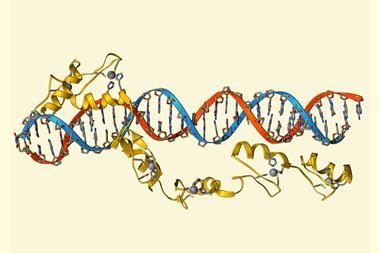
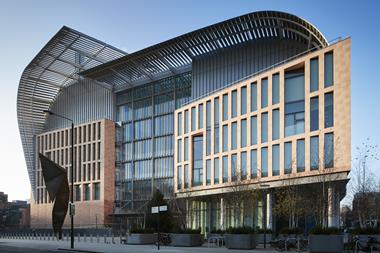

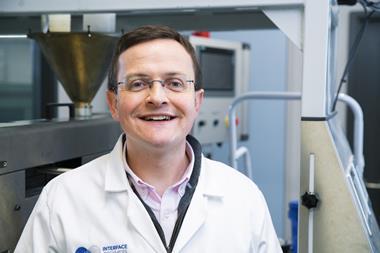

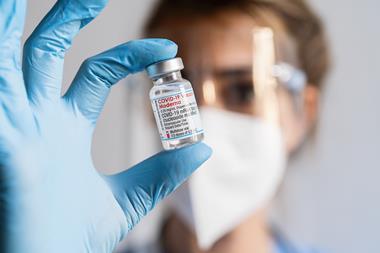
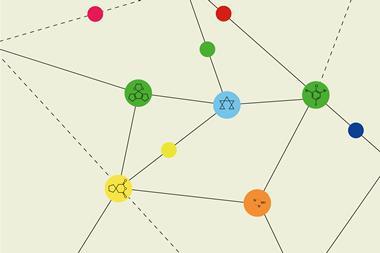
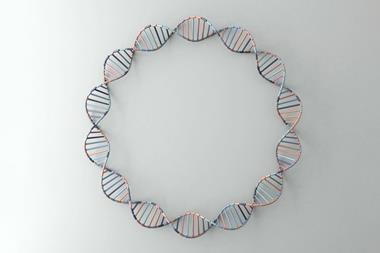


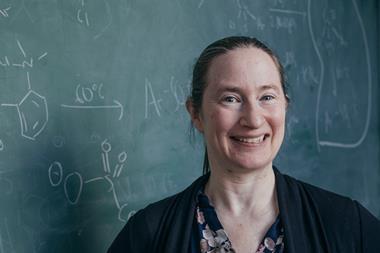
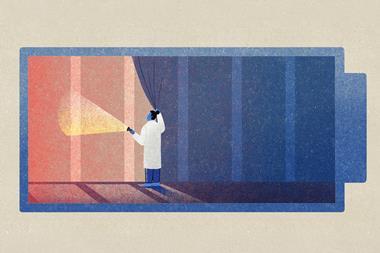
No comments yet